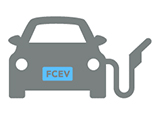Transcript
As explained in our sister-publication, Trends, a wholesale switch to battery-electric vehicles would be environmentally catastrophic, commercially disruptive and incredibly expensive. For that reason, we've consistently advocated a gradual switch from internal combustion engines to hydrogen fuel-cell electric vehicles.
Unfortunately, expensive precious metals, such as platinum, are currently required in hydrogen fuel cells to efficiently catalyze the reactions they employ to produce electricity. Platinum, in particular, is a model catalyst for these reactions because it catalyzes them efficiently and is durable in the acidic environment of a PEM fuel cell. Although alkaline polymer electrolyte membrane fuel cells enable the use nonprecious metal electrocatalysts, these fuel cells lack the necessary performance and durability to replace precious metal-based systems.
So, what are the alternatives? Research published recently in the Proceedings of the National Academy of Sciences described experiments with nonprecious metal electrocatalysts designed to overcome two major challenges: low intrinsic activity and poor durability. To overcome these challenges, the researchers designed a nickel-based electrocatalyst with a 2-nanometer shell made of nitrogen-doped carbon.
This hydrogen fuel cell has an anode catalyst consisting of a solid nickel core surrounded by the carbon shell. When paired with a cobalt-manganese cathode, the resulting completely precious-metal-free hydrogen fuel cell produces more than 200 milliwatts per square centimeter. These electrodes are also much more tolerant to carbon monoxide, which rapidly damages platinum.
The use of this novel anode would dramatically lower prices enabling the application of alkaline fuel cells in a wide variety of areas.
|

